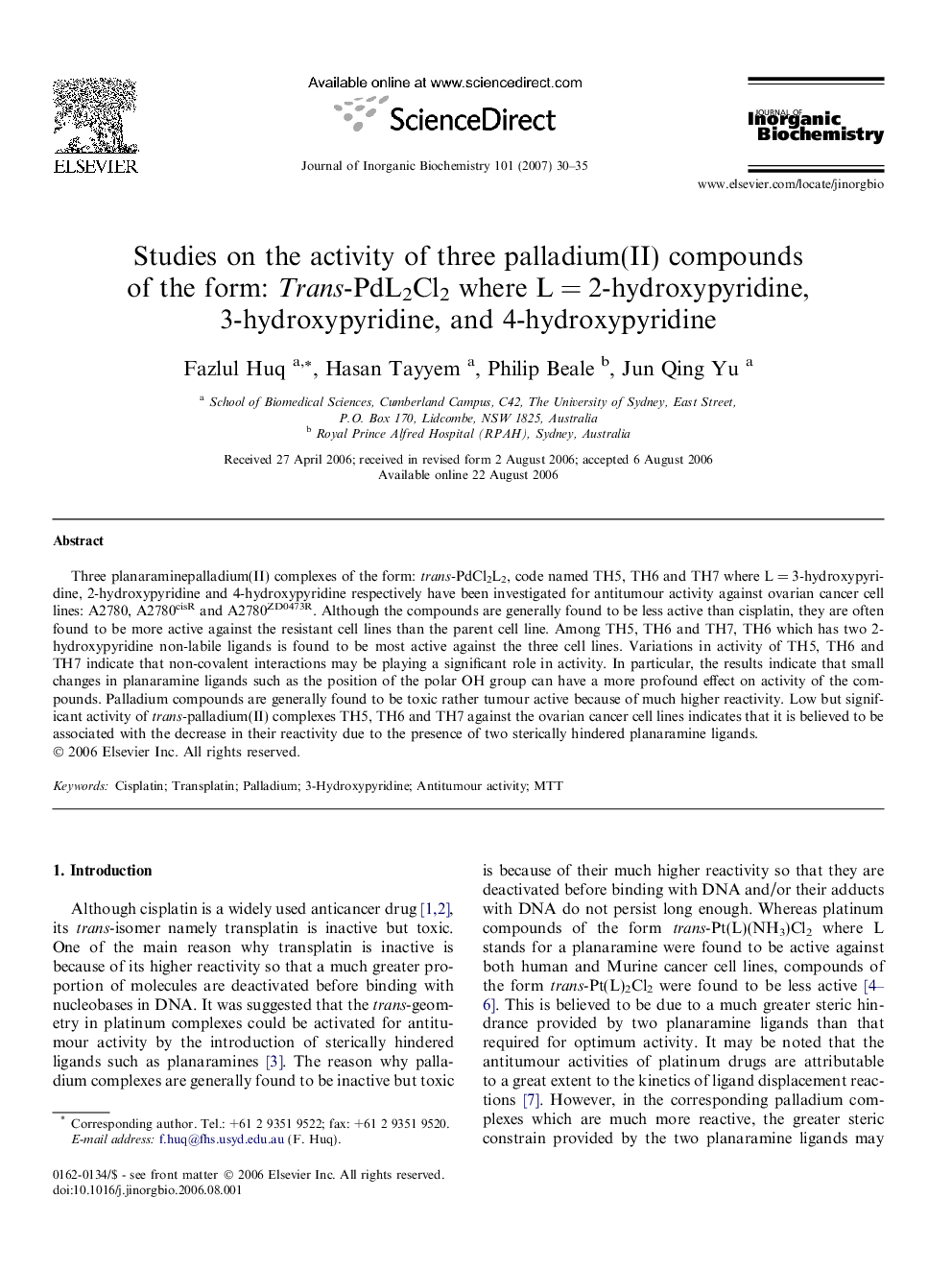| Article ID | Journal | Published Year | Pages | File Type |
|---|---|---|---|---|
| 1316536 | Journal of Inorganic Biochemistry | 2007 | 6 Pages |
Three planaraminepalladium(II) complexes of the form: trans-PdCl2L2, code named TH5, TH6 and TH7 where L = 3-hydroxypyridine, 2-hydroxypyridine and 4-hydroxypyridine respectively have been investigated for antitumour activity against ovarian cancer cell lines: A2780, A2780cisR and A2780ZD0473R. Although the compounds are generally found to be less active than cisplatin, they are often found to be more active against the resistant cell lines than the parent cell line. Among TH5, TH6 and TH7, TH6 which has two 2-hydroxypyridine non-labile ligands is found to be most active against the three cell lines. Variations in activity of TH5, TH6 and TH7 indicate that non-covalent interactions may be playing a significant role in activity. In particular, the results indicate that small changes in planaramine ligands such as the position of the polar OH group can have a more profound effect on activity of the compounds. Palladium compounds are generally found to be toxic rather tumour active because of much higher reactivity. Low but significant activity of trans-palladium(II) complexes TH5, TH6 and TH7 against the ovarian cancer cell lines indicates that it is believed to be associated with the decrease in their reactivity due to the presence of two sterically hindered planaramine ligands.
